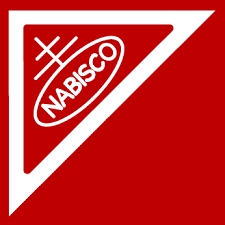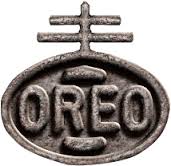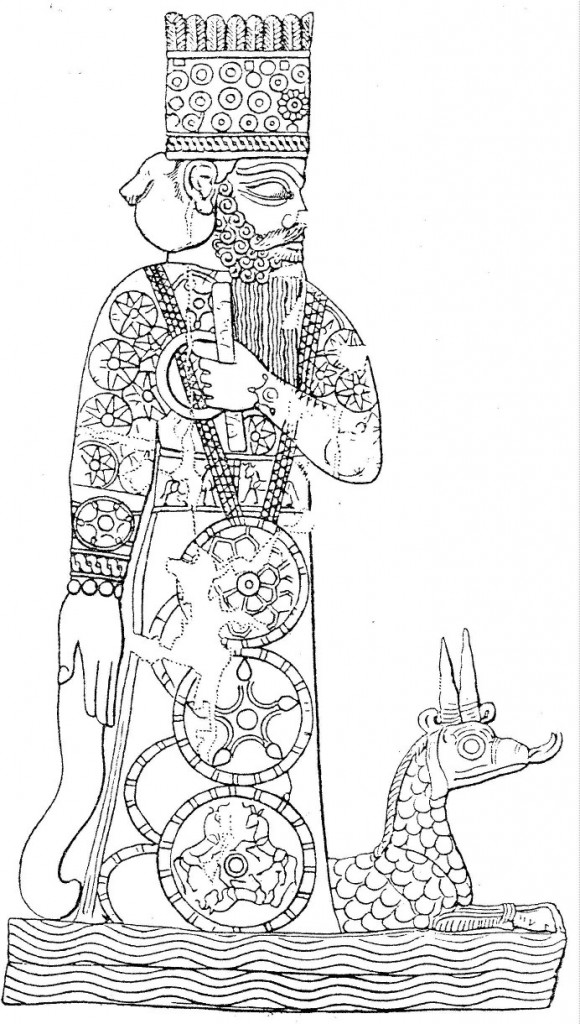by Moe
The OREO cookie is one of the most powerful, and secretive cookies in all the world. It could be called the Holy Grail of creme filling and cookie wholesomeness.
Almost 500 billion have been sold. In fact, if you were to stretch out all the OREOs ever sold, you could circle the globe with OREO cookies 341 times. But did any of these billions of people ever notice the hidden Knights Templar symbology etched into a Oreo cookie as they dipped their OREO’s in milk; or licked off the white creamy filling from the Cross Pattee emblazoned cookies?
Let me tell you that I used to love OREO cookies when I was a little fat and ignorant kid growing up in Southern California during the 70’s and 80’s. However, I was never a creme licker who likes to lick all the creme off and then proceed to eat the cookie. I liked eating my OREO’s all at once, and I used to love dipping them in my milk!
Now back to the symbology….
The current design of the OREO was formulated in 1952 by some secret cookie designer, that must have been affiliated with the Templars, or he just loved their symbology. You can see right above, the circle with the word “OREO” has a cross with a two-bar cross; this is known as the Cross of Lorraine which was carried by the Knights Templar into the Crusades. The Cross of Lorraine is part of the heraldic arms of Lorraine in eastern France. Between 1871 and 1918 (and again between 1940 and 1944), the northern third of Lorraine was annexed to Germany, along with Alsace. (Wikipedia)There are also exactly 12 Templar Cross Pattees in a circle, with also 12 dots and 12 dashes.
Was this all part of some secret cookie crusade?
Writing in 1986, to mark the cookie’s seventy-fifth birthday, American architectural critic and educator, and a Contributing Editor for Vanity Fair magazine, Paul Goldberger, gives us a hint to this hidden symbology when he declared that the Oreo “stands as the archetype of its kind; a reminder that cookies are designed as consciously as buildings, and sometimes better.”
The etymology of the word OREO gives us two words. Or and Eo. The Hebrew meaning of the word Or is light, and it can also mean dawn, daylight, early morning, lightning, star, sun, sunlight, and sunshine. The word Eo has a similar meaning from the Greek word ēōs, meaning dawn.
In the scriptures, we can then find a reference to fallen angels who are called the watchers, whom I believe are connected etymologically to the word OREO. For example, the Greek word for watchers is ἐγρήγοροι egrḗgoroi, pl. of egrḗgoros, literally “wakeful”. This Greek word for “Watchers” originates in Daniel 4 where they are mentioned twice in the singular (v. 13, 23), once in the plural (v. 17), of “watchers, holy ones”. Hence, the Templars symbology of the OREO cookie and name are dedicated to the Morning Star, or Dawn Star of the morning. Another Greek name for the Morning Star is Heosphoros (Greek Ἑωσφόρος Heōsphoros), which means “Dawn-Bringer.”
Jesus call himself the “bright morning star” in Revelation 22:16; “I, Jesus, have sent my angel to give you this testimony for the churches. I am the Root and the Offspring of David, and the bright Morning Star,” and it is also applied to Lucifer, where we see the term appears in the context of an oracle against a dead king of Babylon, who is addressed as הילל בן שחר (hêlêl ben šāḥar), rendered by theKing James Version as “O Lucifer, son of the morning!”, and by others as “morning star, son of the dawn.” The Latin name Lucifer is also found in Greek under the word Phosphorus.
To be an egrḗgoroi, or be wakeful and a true watcher, you do not have to eat OREO cookies, but you must be made of the ingredients of the Root and the Offspring of David, and the bright Morning Star. And you too must fall to earth like an angel at dawn in order to shine the heavenly light of your testimony here on earth like Jesus had done. In a sense, take your own dark shell cookie out in order to show your inner wholesome shiny cream filling to the world.
An interesting Hospitaller and cross pattee connection or coincidence can be found in the year when the OREO cookie symbolgy changed in 1952. This is the year when George VI (King of the United Kingdom and the Dominions: Canada, Australia, New Zealand, South Africa, Pakistan and Ceylon) died at age 56 after a long illness. He is succeeded by his daughter The Princess Elizabeth, Duchess of Edinburgh (now Elizabeth II), who is on a visit to Kenya. She is proclaimed Queen of Canada at Rideau Hall, Ottawa, Ontario. Queen Elizabeth II is the Sovereign Head of the Order of St. John. The Queen knights the various members of the Hospitallers and Templars in London.
Below is an image of an 8 pointed Cross Pattee of the Knights Templar
The Cross of Lorraine (French: Croix de Lorraine) was originally a heraldic cross and what can be found on a OREO cookie.
The two-barred cross consists of a vertical line crossed by two shorter horizontal bars. Among pious Filipino Roman Catholics, the symbol is known as the Crusader’s cross or Cruzado, associated with Knights and the Order of Templar, and which is also the main symbol for Nabisco.

The Lorraine cross was carried to the Crusades by the original Knights Templar, granted to them for their use by the Patriarch of Jerusalem. In the Catholic Church, an equal-armed Lorraine Cross denotes the office of archbishop. French Jesuit missionaries and settlers to the New World carried the Cross of Lorraine c. 1750–1810. The symbol was said to have helped the missionaries to convert the native peoples they encountered, because the two armed cross resembled existing local imagery.(Wikipedia)
Jupiter is known as the star of Babylon, that which is frequently spoken of in the Inscriptions as Marduk and Niribu (né-bé-ru) who is called the god of the morning-and spring sun, or what we can call the blazing morning star.

Moe is the founder of GnosticWarrior.com. A website dedicated to both the ancient and modern teachings of Gnosticism.





